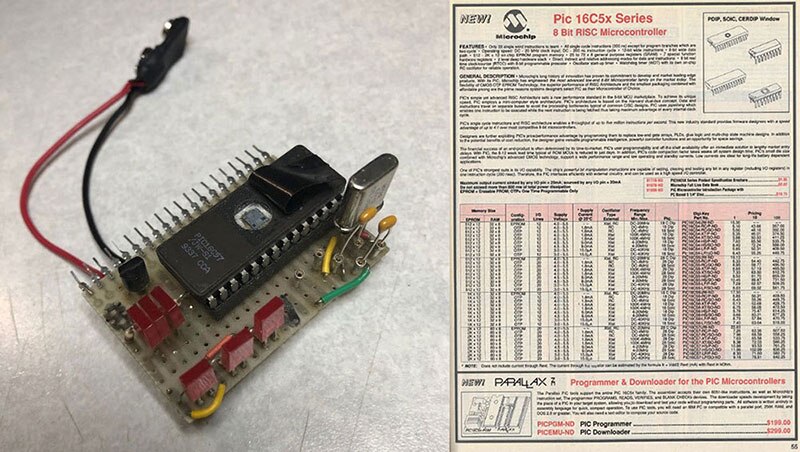How to Select the Best Senior Capstone Project
How do you go about finding and identifying your passionate capstone project? To come up with a special project that would be fun to make and considered valuable, I would draw on my experience to help motivate our Engineers to create something interesting for customers to use. Thinking of things I found to be successfully pleasing and enjoyable in my earlier years, takes me back into my High School days when I participated in science fair projects. I’ve always found tinkering with electronics to be fascinating! I was given a book for Christmas back in the ‘80s called “TTL Cookbook” by Don Lancaster. Digging through the pages, I found a circuit diagram called 555 Timer (NE555P) that looked very interesting to hook up. I found all the parts I needed; capacitors, resistors, the NE555P IC, and a breadboard, and started constructing a circuit found on pages 171-180 to experiment with. I’ll never forget building up the circuit, adding an LED to the output, and seeing it come to life blinking at a 1 Hz rate. From that moment on my passion was locked into buying various IC chips to learn more about electronics and eventually prototype a product to sell.
Just prior to beginning work for DigiKey, I liked working with microprocessors and made an actual computer board using the old Motorola 6809, learning assembly language, and using wire wrap pins and a perf board to create it. Experimenting with LCD dot matrix displays and controlling stepper motors was a complete joy during my late-night hobby of engineering.

In the early 1990s, microcontrollers entered the picture and I was given a sample kit from one of our supplier representatives to evaluate Microchip PIC microcontrollers for adding to our DigiKey Catalog. By reviewing all of their documentation and experimenting with their PIC16C57/JW (a windowed ultraviolet erasable EPROM/MCU – now obsolete), I wrote some assembly code and got an LED to blink successfully. After I was done with my evaluation, we decided to add them to the DigiKey catalog, and years later, we started hiring some engineers to help support all the questions that were coming in from our customers.
To build up this group of engineers, we needed to get them trained. You can read all the books and theories you want, but until you tinker and experiment with the components, you’ll never be able to convey to the customer real-life problems and experiences. I was fortunate enough to visit Microchip headquarters and tour their engineering department to understand how they went about helping customers calling into their support center. I remember at that time how their engineers were given 1/3 of their time to use their development tools and experiment with different ideas to develop applications for making PIC microcontrollers easier to use. Developing a passion to help motivate engineers was not easy.
So, I used that experience visiting Microchip and implemented 3-hour time slots to take parts out of stock and use them. It was easy to ask them to simply start using development tools and breadboarding applications, however, something was missing. They needed a goal to achieve something that would be valuable for themselves and our customers. To spark the passion for our engineers, it was decided to let them design and build anything they wanted to keep for themselves and use it at home outside of work. However, they would have to be able to convey related experiences to our customers. As we grew in our experience to learn the ins & outs of using microcontrollers, our team’s assistance to support customers led to helping them get to production faster using DigiKey parts.
The experience I gained creating a computer board using a microprocessor helped gravitate me to using the PIC16C57 MCU, successfully adding Microchip to our catalog, and guided my career to managing Electrical Engineers at DigiKey for many years. Today, I have moved onto a love of helping makers use our products on maker.io. Utilizing Arduinos, Raspberry PIs, and equipment hardware tools bringing curated value to customers building products. For you to find purpose and passion toward coming up with acapstone project, it takes experimentation to see what clicks for you. It takes effort to find out what truly interests you to want to build for yourself or a friend or family member. Purpose becomes what you’re able to share with the world. It’s how you use your passion to accomplish your goal that will help set your career path going forward. Check out some of these article links (maker.io) to see various platform projects that may help you find something that sparks your interest and aids you in picking your senior project.

Have questions or comments? Continue the conversation on TechForum, DigiKey's online community and technical resource.
Visit TechForum










